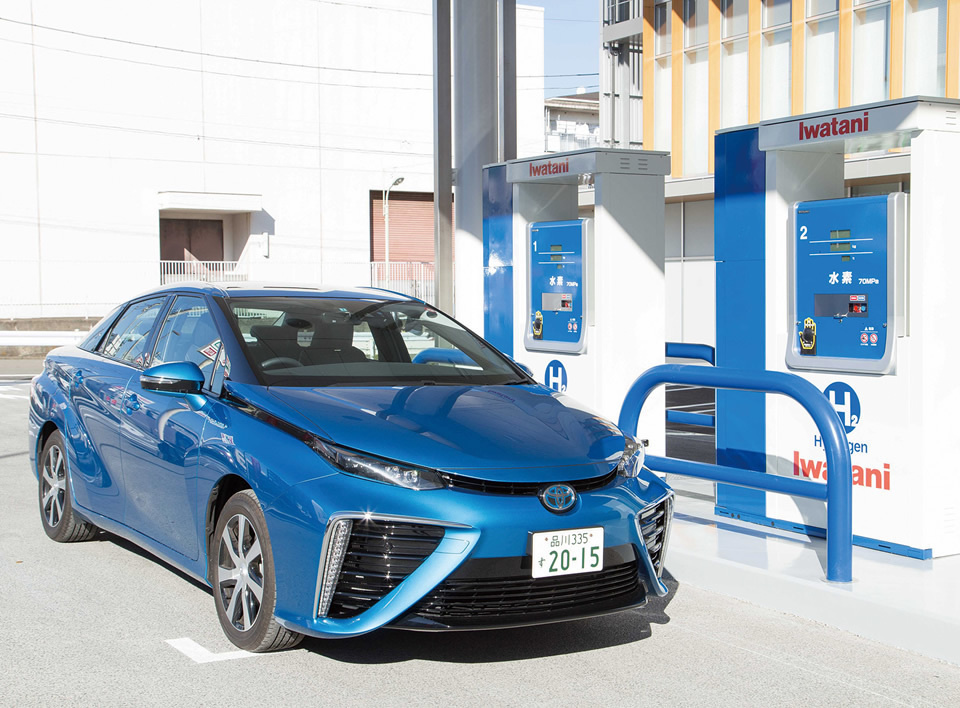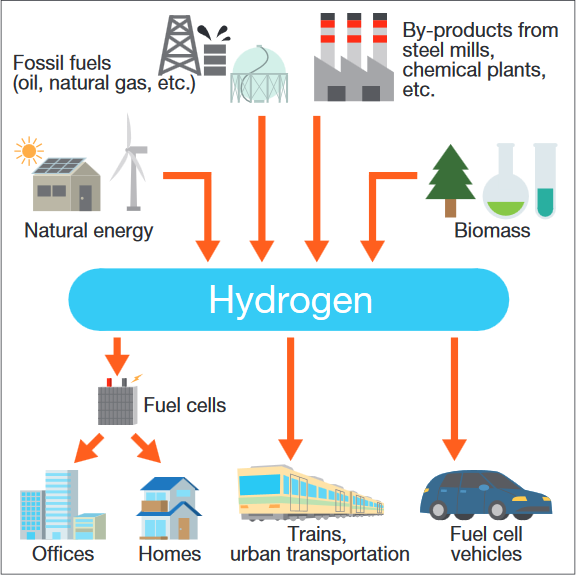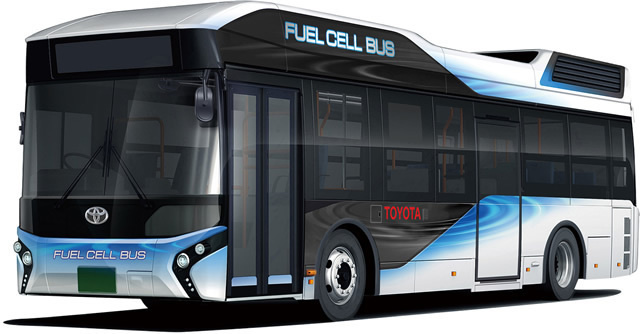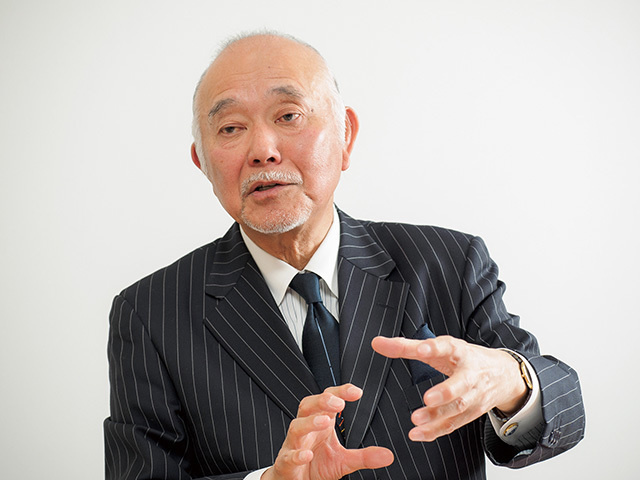The 2015 Paris Agreement was a historical pact in terms of promoting the creation of a carbon-neutral society. Efforts had been underway to lower carbon output, but this agreement set a goal of reaching net-zero emissions of greenhouse gases in the second half of the current century, thus achieving a carbon-neutral world.
The Mirai, marketed by Toyota Motor in 2014 as the world’s first massproduced hydrogen fuel cell vehicle.
Tokyo Institute of Technology Professor Takao Kashiwagi declares that use of hydrogen is the key to a carbon-neutral world. “Hydrogen energy emits no carbon dioxide when used. The hydrogen that serves as the energy source is currently produced mainly by reforming fossil fuels like natural gas, and this process results in the emission of carbon dioxide. But in the future it will become possible to greatly reduce the volume of these emissions by combining the process with technologies such as underground storage of carbon dioxide and the growing of tiny algae to produce biofuel. And in the future it will become a zero-emission energy source when produced using solar and other types of renewable energy.”
Another advantage of hydrogen is that when used in fuel cells to generate electricity directly through electrochemical reactions between the hydrogen in them and oxygen drawn from the air, the generation process is more efficient than the conventional system of thermal power generation, converting the chemical energy of fuels into thermal energy to turn turbines and thereby generate electricity. Furthermore, since the heat generated from the reactions can be used for other purposes, extremely high overall energy efficiency can be achieved. The Toyota Mirai hydrogen fuel cell vehicle can travel 700 kilometers (435 miles) on a full tank, and recently introduced fuel cell buses can travel more than 200 kilometers (124 miles). An electric vehicle would require a large battery to travel similar distances, leading to potential safety issues.
Hydrogen can be produced using a variety of energy sources, including fossil fuels such as oil and natural gas, modification of methanol and methane gas from biomass, and electrolysis of water with wind and solar power. It thus can provide a steady supply of energy.
As Professor Kashiwagi explains: “Use of hydrogen can contribute greatly to saving energy and reducing the burden on the environment. In addition, hydrogen fuel can be made from a wide variety of materials, including forms of energy that are currently unused, such as by-product hydrogen and accessory gases from crude oil. So it can serve greatly to enhance energy security for resource-poor countries like Japan, and if the use of this equitable form of energy spreads around the world, other countries that lack resources can aim for similarly affluent futures.”
A major issue to be addressed is the need to establish systems for mass production and transport. The government and industry are working in tandem to build a social model for introduction of such systems in Fukushima Prefecture, where reconstruction efforts are underway in the wake of the Great East Japan Earthquake. During the 2020 Tokyo Olympics and Paralympics Japan hopes to showcase these initiatives to the world by transporting large amounts of Fukushima-produced hydrogen to Tokyo and putting the spotlight on Japan’s hydrogen-society infrastructure.
Professor Kashiwagi says, “We’re aiming to provide a model for the rest of the world through combined government-industry efforts. Japan has prospered by taking risks in commercialization. This is our country’s tradition and its strength. I hope that in the future we can undertake international coordination, teaming up with Europe and America to tap our respective strengths and promote standardization.”




































